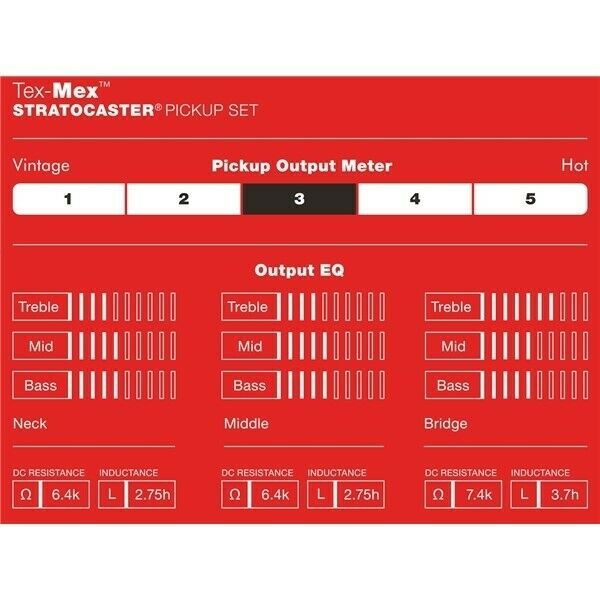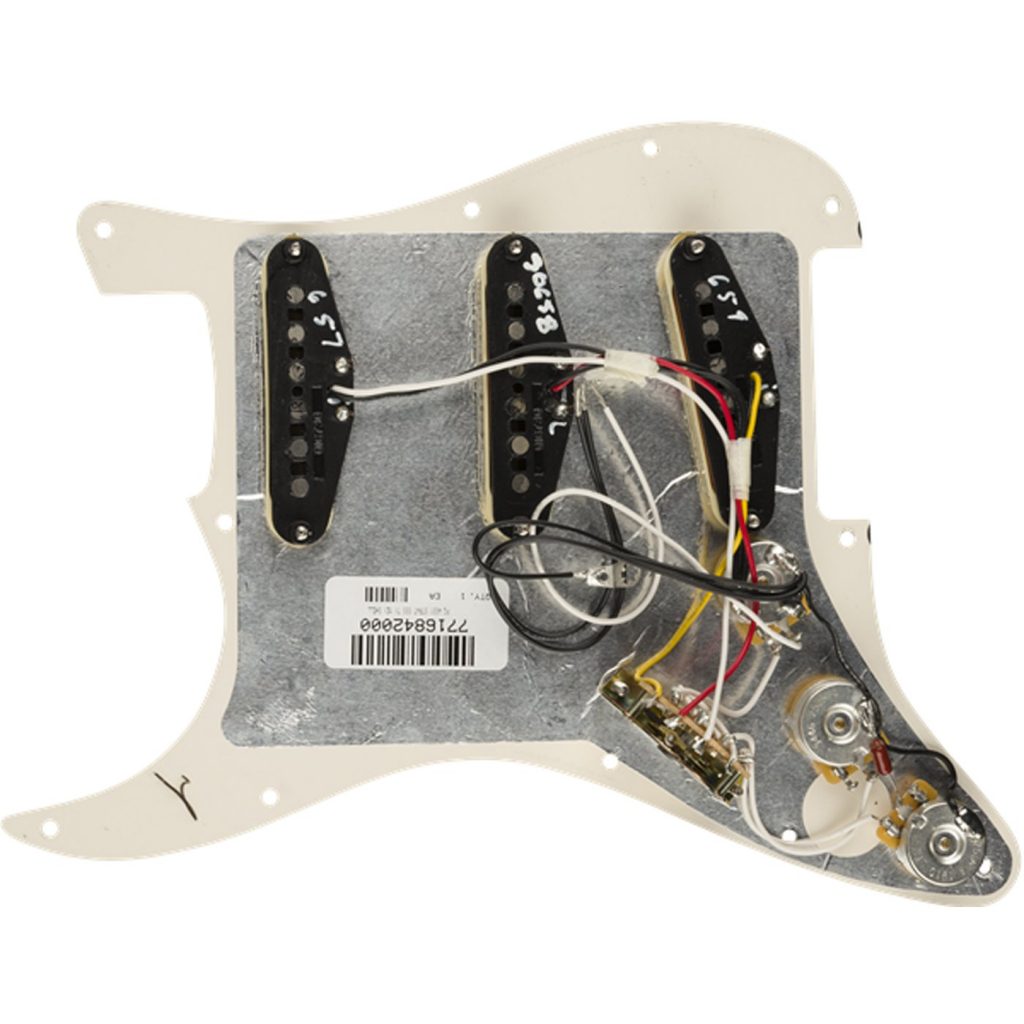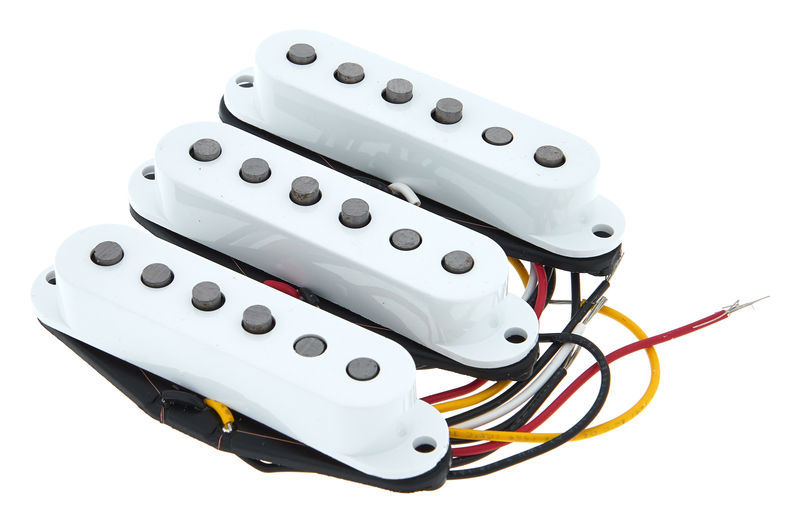FIGURING OUT PICKUPS
A great place to start is here: Fender Pickup Check List Fender typically has no “set” look for their pickups and often no number scheme or another unique identifier written on the pickup itself, usually the number of the pickup represents some or all the SKU when it does exist, but not always are all the numbers written or even written on them at all. The best way to identify them is often by looks and measurements combined. That said, some pickups, like the noiseless ones, are very easy to identify other can be dog gone hard. Bottoms, Wires and such make it a complete detective project at times because Fender would use whatever pickups they had on guitars in some cases so an MIM could show up with higher end pickups, or test runs, etc.Big Picture Info
- Don’t be fooled – The “Number” on the back of the pickup is usually a middle number in the actually part number or part of the part number, and this may change over time for the same model of pickup. Sometimes it’s rock solid so examine with caution.
- The number that is “molded” into the plastic is a BOBBIN NUMBER and is used over and over in different pickups. That just the plastic part number and is worthless for identifying pickups.
- The resistance values are approx. and can vary up to 10% in some cases or even more. The DCR are a guideline, not an absolute but in some cases they are very close.
- Pay attention to the stock wires used.
- Pay attention to the staggering on the poles.
- DCR is only PART of the sonic equation!!
REAL MEASUREMENTS (new page in development)
Last Page Update:2024.03.03
TEX MEX
Why give Tex-Mex it’s own page?
Because this wacky cool baby brother to Fender Texas Special pickups was original designed for as an overwound Alnico Version of the Texas Special pickup set it became a solid staple of Fenders pickup line and just keeps on truckin’
Where did you find these originally?
They have been on some American Standards and many Special Edition MIM (Made in Mexico) release and are also sold in Retail packages as of 2024.
Versions: There are at least 2 versions of this with different part numbers (And more). The other version that has also has a hotter neck pickup are called Vintage Road Worn 60s Tex-Mex but may show up with new covers because some players re-covered them.
Pictures: Lots of internet pictures show the wrong wire colors in the middle and bridge, Also the measurement varies a little between sets so expect that. But overall they are very consistent. Wiring: If one of the wires is blue, it’s NOT a TEX MEX but likely an American Standard
Measurements: It’s quite interesting that they are a little like the Texas Special in that they vary in DCR between the Neck/Middle and Bridge. and the frequency response varies, this is just what made the Texas Specials so popular.
- Advertised DCR
- Bridge: 7.4K Inductance: 3.7H
- Middle: 6.4K Inductance. 2.75H (note: RWRP but notice it has EXACTLY the same values at the neck pickup otherwise)
- Neck: 6.4K Inductance 2.75H
Correct color of wire for location: Neck (White), Middle (Red), Bridge (Yellow)
- Numbering: The 3 digit number for these is VERY consistent.
- Overwound: Bridge has more windings
- BRIDGE (Yellow) 50659 – 7.4K – 3.7 H/ 7.6K – 3.7H / 7.4K – 3.9H (slighter higher version with screws – Delta Version) / 7.5K 3.8H
- MIDDLE (Red) 50658 – 6.4K – 2.75 H / 6.7K – 3H / 6.5K – 2.9H / 6.7K – 3.0H
- NECK (White) 50657 – 6.5K – 2.75 H / 6.5K – 2.9H / 6.5K – 2.9H /6.6K – 3.0H
- Bevelled: No
- Staggered: Yes
- Freq Response: The output frequencies are rather flat for the neck and middle with slightly milder treble, but the treble is accented for the bridge and it’s a bit hotter
- Magnet: Alnico 5
- Wire: Polysol magnet wire
- RWRP: Middle Pickup (Reverse wound reverse polarity – reduces hum in positions 2 and 4 of the 5 way switch)
- SKU: From a new package: 0992131000 (may be others).
- Popularity: HIGH – A great bang per buck!
Other Measurements Some sets set had a HOT neck pickup so if you get this, that’s a little special. I’ve seen these as Road Worn 60s Tex-Mex
- Bridge: 76714 – 7.3K – 3.76.H (expected)
- Middle: 76715 – 6.5K . 3H (slightly hither than expected)
- Neck: 76716 – 7.35K – 3.75H (reads like a bridge pickup!!)
Manufacturers package numbers
- UPC: 717669496319
- MPN: 0992131000
- SKU: 099-2131-000



